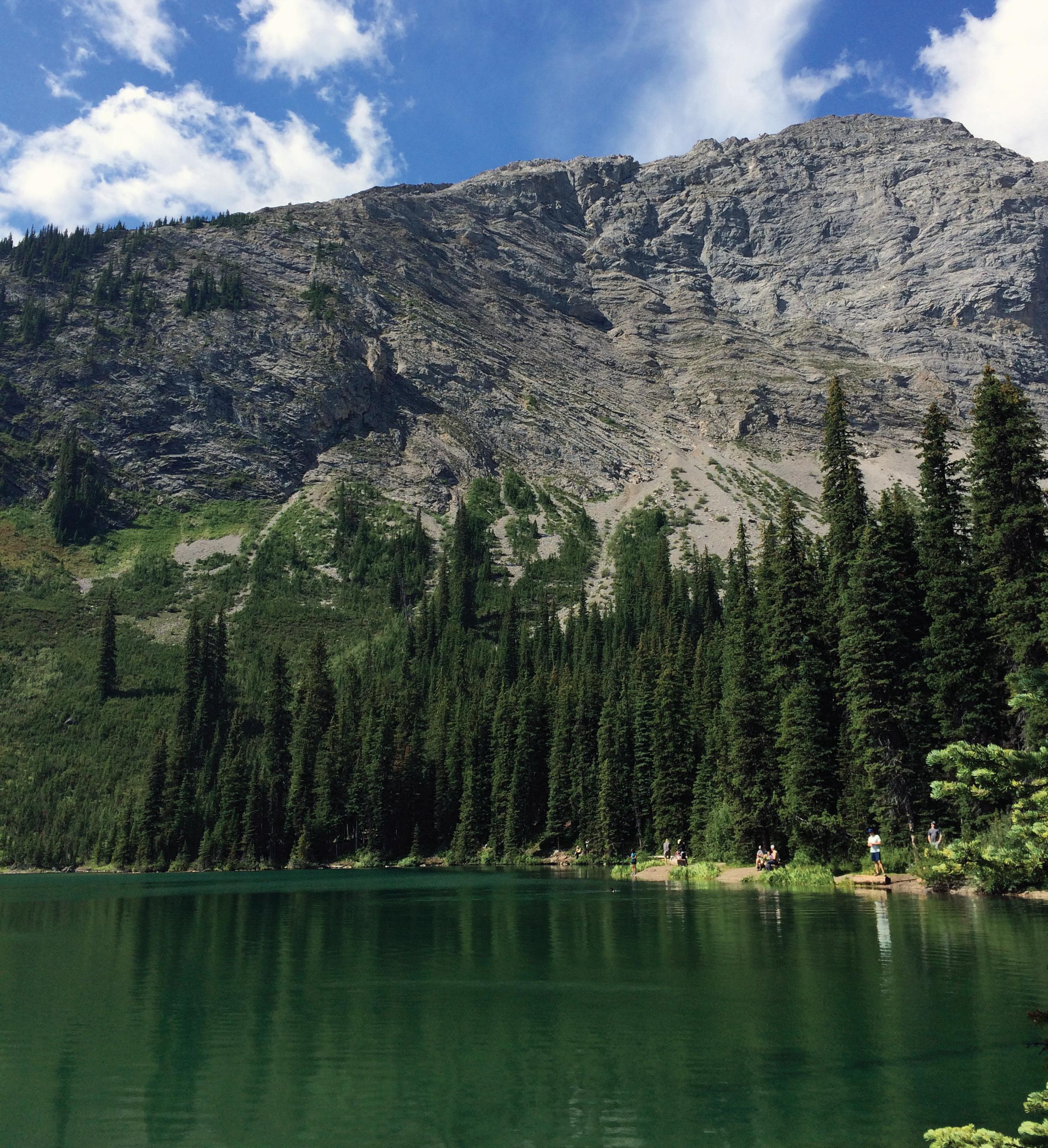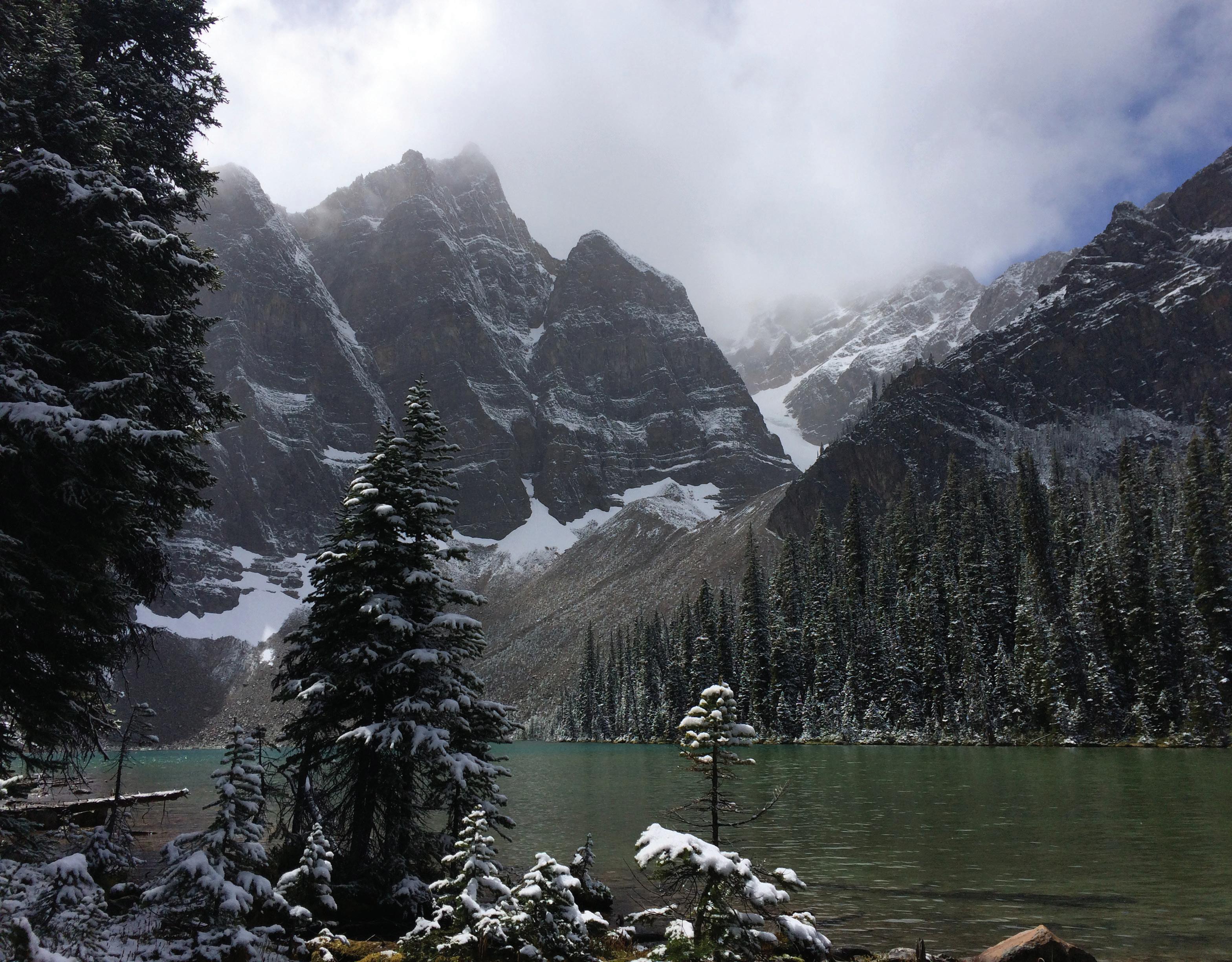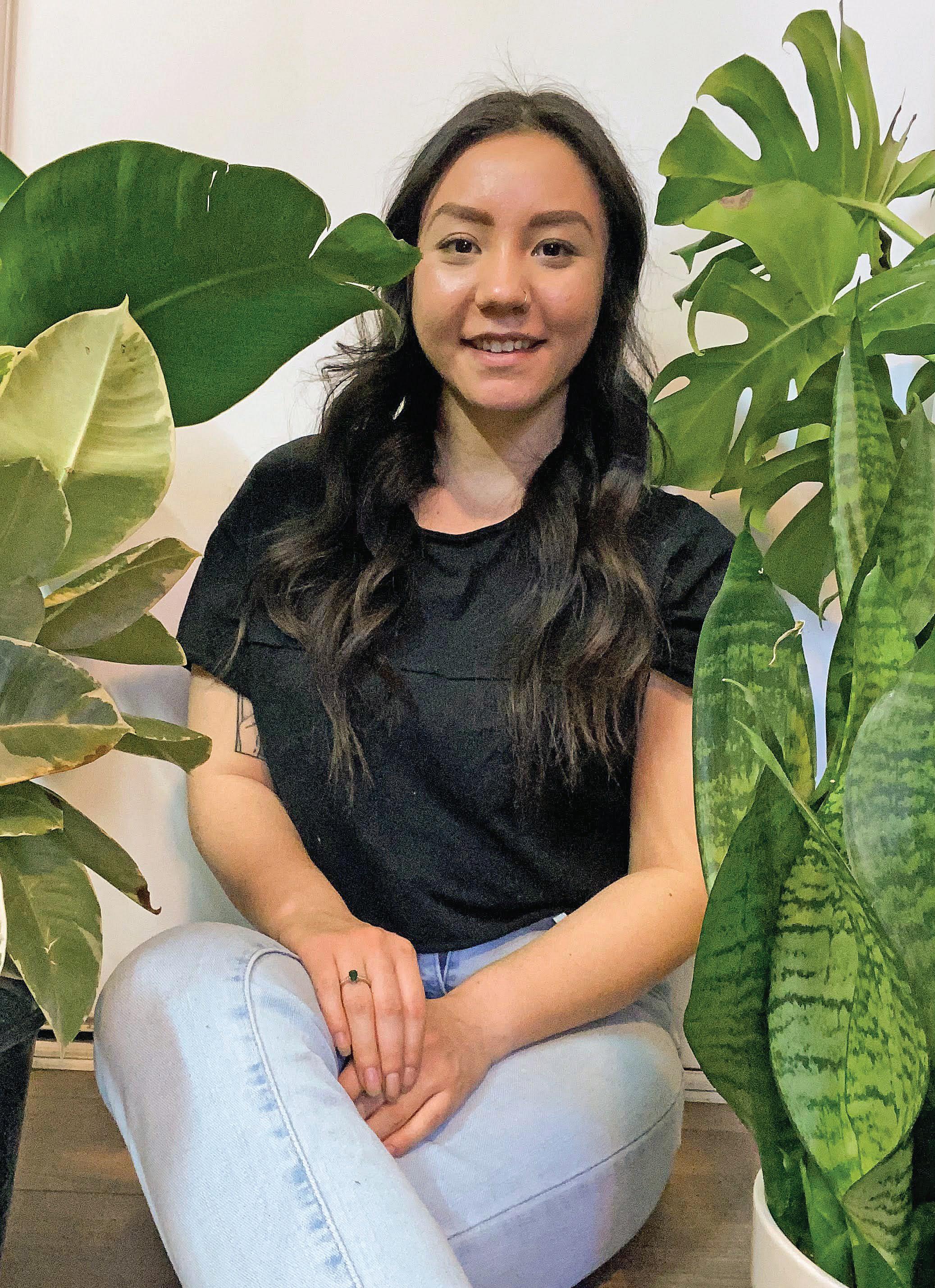
6 minute read
Happy hiking trails, far from Covid
ON THE TRAIL WITH COVID: Your guide to staying safe outdoors
Simple tips to stay safe while hiking and camping
Advertisement
ETHAN WARD eward@cjournal.ca
Last summer, my dad and I trekked out to Shadow Lake along the Redearth trail in Banff National Park. We felt the sun beat down on us, but rather than feeling unrelenting, the heat was pleasant. Perhaps that was because we had been stuck inside for so long. The sun was now a welcome relief to the artificial lights of our home. Despite the pandemic, the parking lot was full of day hikers and backpackers, undoubtedly attracted by the moderate, flat trail.
The number of people on the trail made me wonder if backcountry camping was as safe for social distancing as I had originally thought. It’s especially worth considering since national park reservations began this month April.
Last summer, many people escaped into the outdoors after being shut in during the spring COVID-19 lockdown. Our provincial and national parks saw an increase in domestic visitors, with many going camping for the first time, looking for a safe way to get outside during the pandemic. This surge has continued through the winter and even led to a global demand for things such as backcountry skis.
The influx of people going into the backcountry has presented a problem, challenging the assumption that backcountry camping is immune to social distancing obstacles.
Dave Stark, the manager of operations at Yamnuska Mountain Adventures, says these problems changed interactions between backcountry campers over the past summer - in particular, hikers who didn’t share the same household.
“Camping itself was a big issue for us. The easiest way to deal with it was that everyone got their own tent, which led to issues of campsite availability. Cooking is also an issue that we looked at. Often it’s a very communal activity with one pot shared among everyone. This year we had to have the guides handle everything,” says Stark, whose touring service offers backpacking and other guided outdoor adventures,
The cooking problem was dealt with by the guides, as they managed the prepping, cooking and serving. Guests were responsible for their own dishes, rather than the typical communal approach.
However, meals were not the only issue they faced.
“Simple things like taking pictures with each other had to be limited. It was all a lot of things we don’t really think about,” says Stark.
The first step that needs to be planned for is packing, which has changed drastically due to the COVID-19 pandemic.
Cleaning equipment is now vital, even in the outdoors. My first assumption in regards to camping is that people are going to get dirty, and cleaning wouldn’t be as much of an issue as it normally is at home. Instead, it’s essential to bring sanitizer and disinfectant wipes to clean surfaces and equipment others have touched, along with any garbage carried in.
Booking ahead and making sure you can actually get a spot is more important than ever, as most sites don’t have a lot of tent pads in the best of times, which is further intensified by the pandemic.
Even the simple acts of sleeping and cooking requires meticulous planning when backcountry camping. Sharing a tent with someone outside your household is now off-limits, increasing the amount of tents needed to be carried in for each individual hiker. This means more weight and less room to pack other essentials such as hand sanitizer and disinfectant wipes. This domino effect further complicates backcountry camping in the time of COVID-19.
How everyone is spaced out along the trail is also a normally unimportant issue that now needs contemplation. In order to reduce instances of contact, it is necessary to identify and avoid places where others may frequently stop along the trail and any potential popular points of interest.
Crowd size is also an issue. Narrow mountain trails are not great for facilitating social distancing, often requiring people to step off the trail to avoid oncoming traffic. This is something I’ve encountered on many busy backcountry hikes before COVID, that now adds a whole other dimension to hiking.
To properly social distance, “Knowledge of the space and how you can use that to your advantage is vital,” says Rhonda Scheurer, president of the Calgary Outdoor Club.
“The ways we are mitigating contact between people is through what trails we chose. We’re spending less time on narrow trails where people feel compelled to get close to
The trail at Lillian Lake (pictured) leads to Galatea Lakes in Kananaskis Country. With 17 tent pads, this is a large
well travelled backcountry campground. PHOTO: ETHAN WARD
one another,” says Scheurer, “or when you’re passing another group, you would be passing closer to one another. The larger the group is, the harder it is to stay spaced out. Wide trails allow people to still be a group, but to do so safely.”
However, social distancing is not the only issue. Stepping off the trail also causes trail braiding, which ruins the surrounding environment. Scheuer suggests avoiding busy locations with narrow trails, such as the popular Berg Lake trail in B.C., which is consistently booked.
Despite the necessity of social distancing, it poses another concern, as pointed out by Scheurer.
“Bear safety and COVID safety are in direct conflict with one another.”
“With group sizes, during the summer, the recommended group size has been five for bear safety. Your group of five or more people is supposed to be relatively close together,” says Scheurer. “By the time your group has split to two or more metres apart, you’re not really together anymore. Bears won’t perceive you as one big entity if you are too far apart.”
Although, bears and social distancing are not the only concern to be wary of when setting out on the trails. It is essential to remember the basics of backcountry safety, such as informing someone where you are going and making sure you aren’t doing more than you can handle. There were many news stories this past summer about deaths and rescues in the mountains.
Despite these concerns, my dad and I still went out confident in our social distancing abilities. Thankfully, the Redearth trail on the way to Shadow Lake was wide and the limited number of campsites meant crowding wasn’t an issue. The trip was a huge success and after having spent so much time in our house for the months before our trip, being able to explore the outdoors was a freeing experience.
Even so, we still made mistakes when we set out for our much-needed escape to the backcountry. Forgetting to pack our firestarter, we had to stop in Canmore to pick a new one up. Not the end of the world, but when you are trying to avoid public spaces as much as possible, it’s less than ideal. This oversight certainly contradicts the advice I’ve given on being mindful of packing the essentials, however, lessons like these can inform backcountry explorers on how to safely get outdoors during COVID-19.
> Rhonda Scheurer











